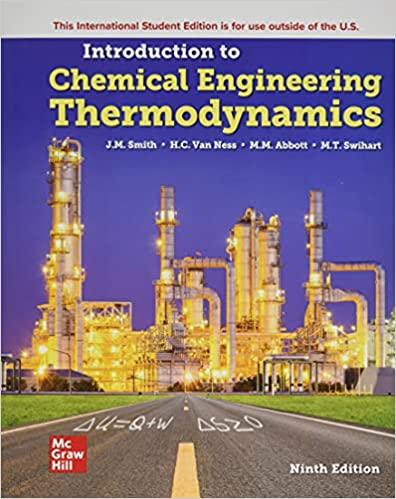Answered step by step
Verified Expert Solution
Question
1 Approved Answer
Question 1 There are different routes through which acetic acid can be produced. One route is carried out via oxidation of ethylene ( C 2
Question
There are different routes through which acetic acid can be produced. One route is carried out via oxidation of ethylene into acetic acid. In addition, the parallel reaction, that is oxidation of ethylene into water and also takes place. The reactor product stream will contain wt acetic acid, wt wt water, and trace amounts of inert from the liquefaction process of air unreacted ethylene, and unreacted Using a "Flash type drum ie cooling tank of entering acetic acid and all water will be knocked out, in addition to a small fraction of The yapor stream will contain wt wt o wt acetic acid, and trace amounts of water, and To simplify your task, we will assume that of yapor feed stream with a composition of wt and wat acetic acid, at @ and bar, will be fed to a "RadFrac" distillation tower, use NISTTDE experimental data for suitable binary mixture. From the top of the distillation tower, a second feed stream of fresh water at and bar will be introduced, as shown in Figure Your task is to design a "RadFrac" absorption unit that will scrub acetic acid from COFEED" stream so that we end up with an inert outlet gas stream, mainly composed of and trace amounts of N This CObased gas stream can be used as a blanket inert atmosphere purged onto hydrocarbon storage vessels. Report the composition, and flow rate for top and bottom streams, the reflux ratio, and number of theoretical stages. Use "UNIQUAC" method for your simulation.

Step by Step Solution
There are 3 Steps involved in it
Step: 1

Get Instant Access to Expert-Tailored Solutions
See step-by-step solutions with expert insights and AI powered tools for academic success
Step: 2

Step: 3

Ace Your Homework with AI
Get the answers you need in no time with our AI-driven, step-by-step assistance
Get Started


